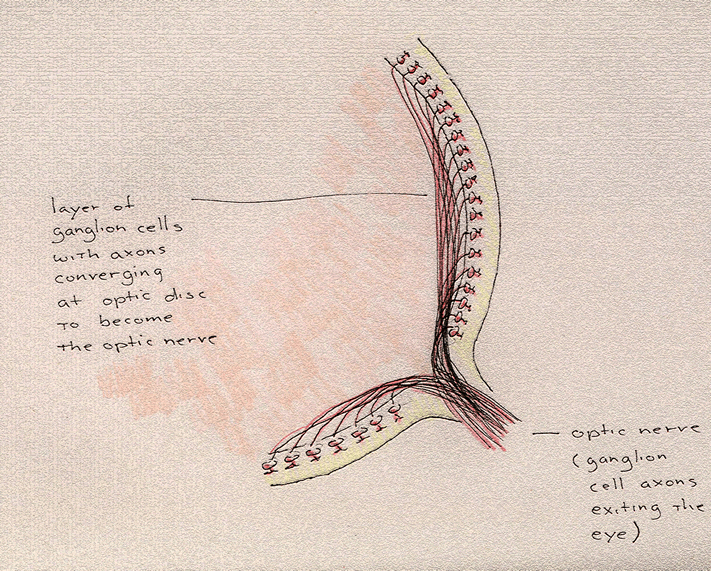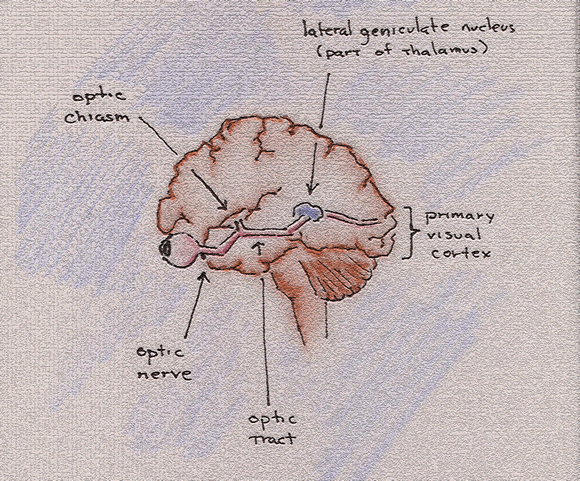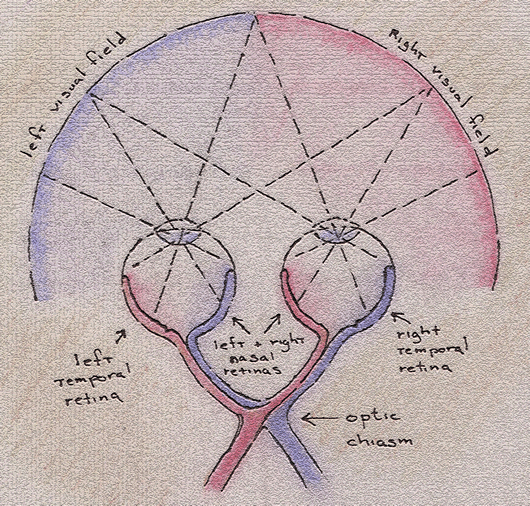Brain (cont'd)
The Optic Nerve
As signals from the retina enter the brain proper, they are conveyed along axon bundles or nerve tracts, the first and principle of which is the optic nerve.

It is composed of ganglion cell axons, now covered in a fatty, white substance called myelin, which serves to accelerate signal transmission; to insulate signal-bearing axons against the noise of other axons not originating in the retina; and to prevent the degradation of signals over distance.
When nerve tracts move from their source towards some destination, they are said to project. And, as a general rule, they project to brain nuclei, which is to say, aggregations of neurons dedicated to a some similar function.

The optic nerve projects from the eye towards the optic chiasm. Here, ganglion cell axons from the nasal retina of the left eye cross to the right hemisphere of the brain to join ganglion cell axons from the right temporal retina of the right eye. In this way, the right visual fields from both eyes are brought together and the differences between their slightly varying points of view are used to create a sense of depth.

Similarly, the axons projecting from the right nasal retina cross to the left hemisphere to join axons projecting from the left temporal retina of the left eye.
So, axons from the nasal retinal areas are said to project contralaterally—i.e., to the opposite side or hemisphere—and axons from the temporal retinal areas are said to project ipsilaterally (i.e., to the same side of the hemisphere in which they originate).